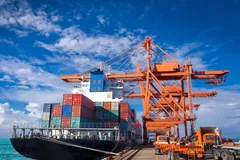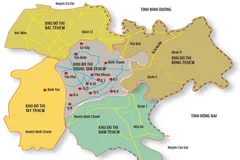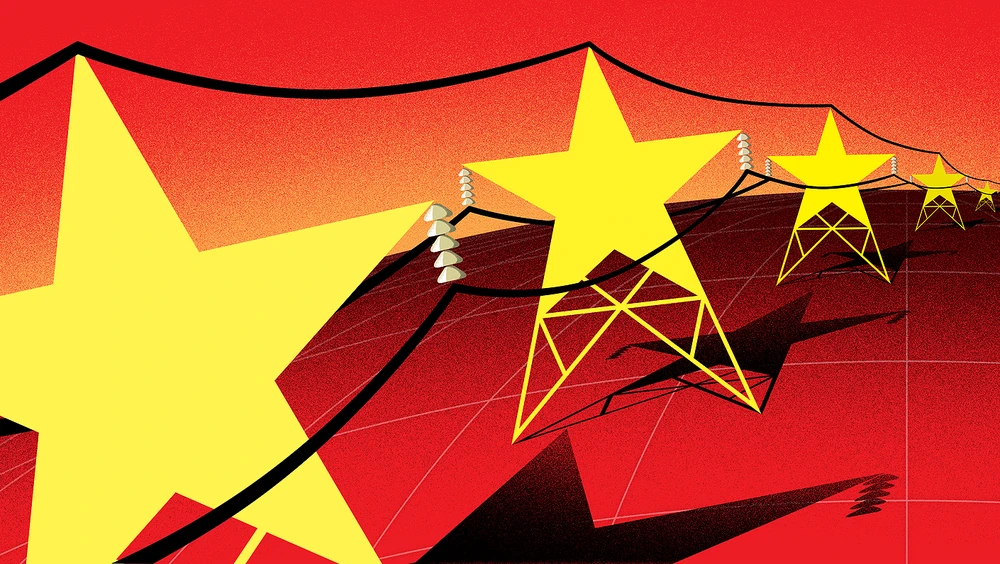
Philippine Senator Sherwin Gatchalian has not been sleeping well.
"It is very difficult for us to sleep every night without lingering fears," he said in early February, as he presided over an investigation into potential security risks stemming from Chinese part-ownership of his country's power grid operator.
The Philippines is far from the only country running on China-backed electricity. As a complement to President Xi Jinping's signature Belt and Road infrastructure initiative, Beijing is pushing what it calls Global Energy Interconnection -- a vision of a multi-trillion-dollar worldwide electricity network.
China already has a number of power lines connected to other countries, including Myanmar, Laos and Vietnam, while lines into Thailand, Pakistan and Bangladesh are under consideration. For emerging economies hampered by chronic electricity shortages, such investments may be a blessing.
Critics, however, worry that China's expanding presence in regional power grids could leave partner countries vulnerable.
Xi himself proposed Global Energy Interconnection in 2015 at the United Nations Sustainable Development Summit, as a way to meet the world's demand for clean power. Like the Belt and Road itself, China frames the concept as beneficial for everyone. "It increases mutual trust in politics and creates a new pattern of energy security featuring cooperation, mutual benefit and win-win results," says the website of the Global Energy Interconnection Development and Cooperation Organization, or GEIDCO, the body leading the charge.
Xi's pitch was not exactly new. European Union countries had been linking their grids, while the Renewable Energy Institute founded by SoftBank Group CEO Masayoshi Son had been calling for a networking linking Asian countries such as Japan, South Korea, China, Mongolia and Russia. But the president's proposal dovetailed with his broader drive to build infrastructure spanning Asia and Europe.
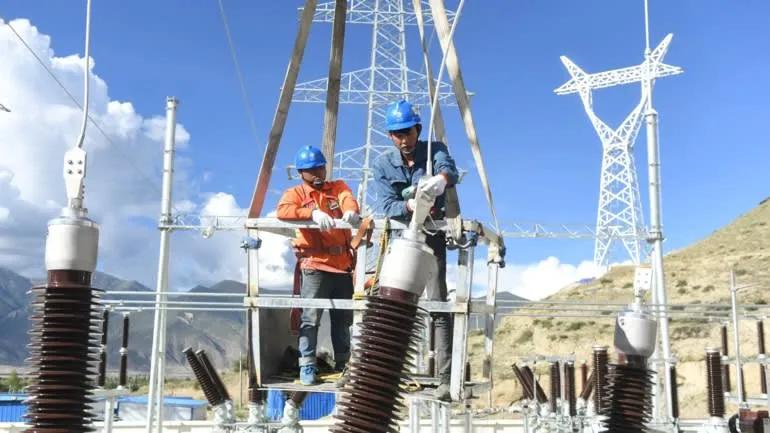 State Grid Corporation of China workers at a power substation in the Tibet Autonomous Region: The company is a driving force for Beijing's electricity interconnection vision. © Reuters
State Grid Corporation of China workers at a power substation in the Tibet Autonomous Region: The company is a driving force for Beijing's electricity interconnection vision. © Reuters Tomas Kaberger, chair of the Renewable Energy Institute's board and a senior adviser to GEIDCO, believes that interlinked grids make economic sense and will inevitably spread. "It is like railway systems or telecom systems [that develop] step by step, but one day it will all be interconnected," he said.
Proponents stress that the connections would allow for more efficient use of renewable resources. Wind power generated in breezy areas, for example, could be supplied to less-windy places with higher demand.
Kaberger credits GEIDCO with developing the overall vision, "presenting a global innovation agenda which engages the industry" and spurs transmission technology development.
China has certainly switched on the investment.
Chinese companies announced 35 new power transmission projects outside China between March 2018 and December 2019, on top of the dozens of power generation projects, according to Washington-based consultancy RWR Advisory Group.
A GEIDCO report issued last year estimated that total investment in power sources and grids in Belt and Road countries would reach a staggering $27 trillion by 2050.
A key player for Beijing is the State Grid Corporation of China. Backed by readily available Chinese financing, the state-owned company has steadily won contracts and brought other Chinese companies into the fold. SGCC has built grids connected from China to Russia, Mongolia, Myanmar and Laos, while also investing in grid operators in European countries such as Portugal and Italy.
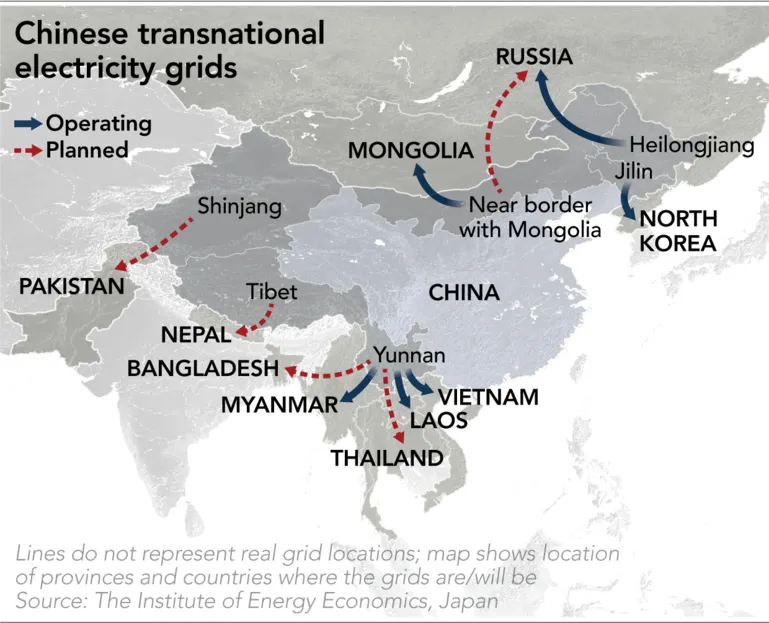
In 2007, years before Xi made his case to the U.N., SGCC secured the right to participate in the Philippines' grid -- one of its first major overseas moves.
The company partnered with local tycoons to establish the National Grid Corporation of the Philippines, or NGCP, in 2009 as part of a privatization effort. The 25-year contract, which can be extended for another quarter-century, gives SGCC 40% of the consortium -- the legal maximum foreign ownership in public utilities.
The Philippine government's National Transmission Corporation, known as TransCo, still owns the transmission assets. But TransCo said NGCP has installed Chinese equipment, including some from telecom giant Huawei Technologies, in its system while appointing Chinese executives including a chief technology officer -- despite restrictions in the constitution that would seem to preclude such moves.
Some experts suggest SGCC's recent push for a "power internet of things" -- bringing more information and communications technology into the industry -- means China may not need to control much physical infrastructure to hold sway over electricity supplies.
Instead, "China will likely be able to achieve the interconnection of regional energy distribution networks ... through the global deployment of comprehensive Chinese tech solutions for the power sector, such as smart meters, communications networks and data management systems," said Claire Chu, a senior analyst at RWR Advisory. She added that significant use of ICT in the power sector heightens security risks.
This is what keeps people like Gatchalian up at night.
In December, Philippine Energy Secretary Alfonso Cusi asked an uncomfortable question out loud: Could China "really shut down" the nation's power grid?
"We can say that in this digital age, anything and practically everything is possible remotely," Cusi said. "You can start your car even at the parking area, you can put on the air-con, you can lock and unlock it."
At the investigation hearing in February, opposition Senator Risa Hontiveros also raised alarm about SGCC's ownership. "They are bound by law to gather intelligence and report to the Chinese government if requested and they may not refuse," Hontiveros said, referring to China's vaguely worded national intelligence law.
"What happens in case of a diplomatic or political conflict between the Philippines and China?" she added.
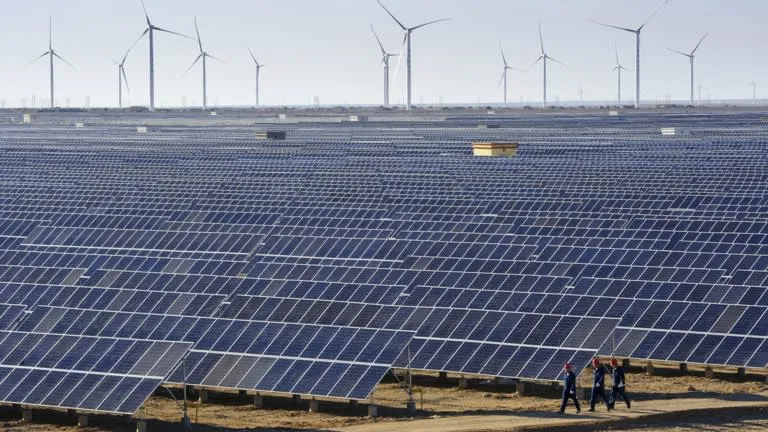 China's own energy needs have fueled investment in domestic projects, like this solar plant in the Xinjiang Uighur Autonomous Region. © Reuters
China's own energy needs have fueled investment in domestic projects, like this solar plant in the Xinjiang Uighur Autonomous Region. © Reuters In the West, the Donald Trump-led backlash against Huawei has emphasized similar suspicions of China's intentions. And U.S. politicians have long held concerns about the safety of the electric grid as well.
"Lawmakers and experts in Washington have been engaged in discussions about power grid security for several years now," noted Chu. The National Defense Authorization Act for 2020, signed in December, recommends a national strategy for securing the power network against cyberattacks.
Security aside, there are questions of competition to consider. Just as Huawei has rapidly grown into a telecom powerhouse, China's energy companies are gaining access and experience that could give them a global edge.
"Getting hold of power grids gives [SGCC] a lot of information about a country's energy supply and demand," said Yobun Inoue, senior coordinator at the Institute of Energy Economics, Japan. This could lead to other contracts, like power plant construction.
China's own appetite for electricity has driven big investments in domestic infrastructure over the years. From 2013 to 2018, spending on energy and grid systems surged almost 40% to reach 534 billion yuan ($76.42 billion), according to the IEEJ. "The large part of global investment in the most advanced transmission projects has been within China" in the last decade, said the Renewable Energy Institute's Kaberger.
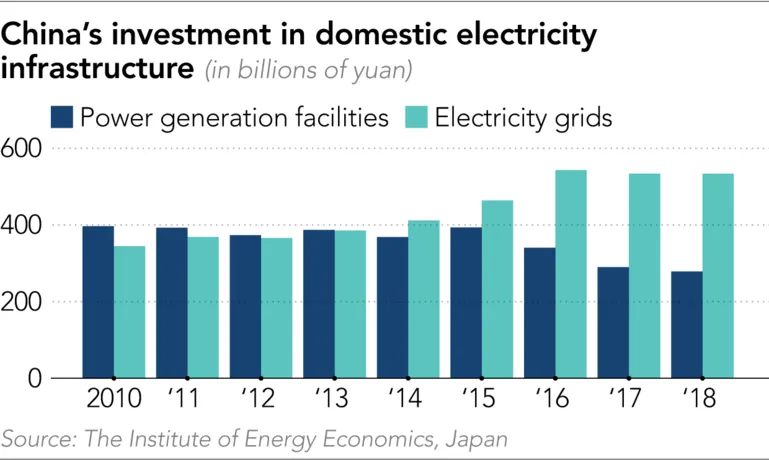
Now China hopes to use its technological expertise to set international standards.
One focus is ultrahigh voltage technology, which enables power transmission over long distances with minimal energy loss. In Brazil, China's UHV transmission standard was used for the 2,538 km Belo Monte grid launched last October under a 30-year concession.
At the International Electrotechnical Commission, meanwhile, China has become more outspoken in technical discussions and leads a number of working groups on standardization.
"Achievements in standardization are conducive to [our] participation" in the Belt and Road, Shu Yinbiao, SGCC's then-chairman, told state media in a 2017 interview.
An RWR Advisory report warned that standardization would lead to a "global reliance on China as an industry leader in control of key power technologies ... which will no doubt have strategic consequence."
Yet some industry insiders suggest those concerns are overblown.
"There is no technology at the moment that can only be done by Chinese companies," said Eiichi Zaima, research advisor to the Central Research Institute of Electric Power Industry.
Kaberger agreed that the power business offers equal opportunities to other players -- China just happens to be quick to seize them. Global Energy Interconnection, he stressed, is not a uniquely Chinese idea that other countries could not explore on their own. He said there is only a risk that China will control the development "if other countries do not engage in it."
Put another way, if you snooze you lose.











